The Network’s plant conservation awards were presented by Philippa Crisp (Network President) at the Network’s Annual General meeting in Wellington on Friday 11 November 2011. These awards are made by the Network to acknowledge the outstanding contribution made by individuals, schools, communities, nurseries and councils in the protection of NZ’s globally important native plant life.
“Those honoured are leading the way in plant conservation in New Zealand, and set an example to us all to strive for”, said Philippa Crisp. The New Zealand Plant Conservation Network congratulates all award winners.
The awards were as follows:
Individual
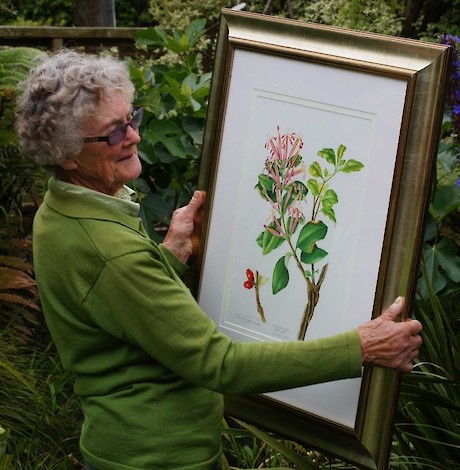 Anne Fraser, former farmer and housewife, is a dedicated orchidologist. She received the Network’s individual award for her strong advocacy of a Nationally Threatened Spiral Sun Orchid (Thelymitra matthewsii). She developed an interest in this plant in her late 60s and this motivated her to first do a B.Sc. in Biological Sciences at the University of Waikato, and then embark on a “little” thesis on Thelymitra matthewsii for her M.Sc. Her thesis was completed 10 years after she started, much to her supervisor’s amazement and relief. During that time Anne travelled to Australia, saw T. matthewsii there, and argued with sound data that this orchid, long treated in New Zealand as a “vagrant” was not so, but a long time indigenous colonist that was now seriously threatened by loss of habitat and competition from weeds. Her work, published mostly as a series of articles in the Auckland Botanical Society Journal, is the single most detailed and comprehensive study ever done on any orchid species in New Zealand. The work is all the more remarkable because Anne completed it at the age of 80, and has continued her monitoring after completion. She is even seriously considering doing a PhD (if the University will take her!). Peter de Lange said “I honestly can think of no one more deserving than this octogenarian, much loved orchid expert with a heart of gold”
Anne Fraser, former farmer and housewife, is a dedicated orchidologist. She received the Network’s individual award for her strong advocacy of a Nationally Threatened Spiral Sun Orchid (Thelymitra matthewsii). She developed an interest in this plant in her late 60s and this motivated her to first do a B.Sc. in Biological Sciences at the University of Waikato, and then embark on a “little” thesis on Thelymitra matthewsii for her M.Sc. Her thesis was completed 10 years after she started, much to her supervisor’s amazement and relief. During that time Anne travelled to Australia, saw T. matthewsii there, and argued with sound data that this orchid, long treated in New Zealand as a “vagrant” was not so, but a long time indigenous colonist that was now seriously threatened by loss of habitat and competition from weeds. Her work, published mostly as a series of articles in the Auckland Botanical Society Journal, is the single most detailed and comprehensive study ever done on any orchid species in New Zealand. The work is all the more remarkable because Anne completed it at the age of 80, and has continued her monitoring after completion. She is even seriously considering doing a PhD (if the University will take her!). Peter de Lange said “I honestly can think of no one more deserving than this octogenarian, much loved orchid expert with a heart of gold”
Plant Nursery
Southland Community Nursery, run by Chris and Brian Rance, won the ‘Plant Nursery Involved in Plant Conservation’ award for its unique approach to the growth, preservation and education of the public about native plant species. The nursery was nominated by three separate individuals.
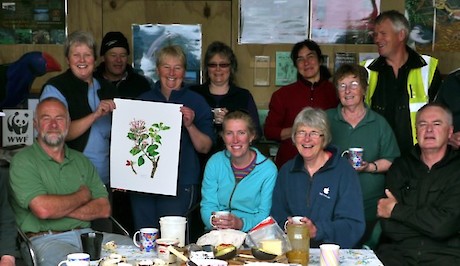 The nursery propagates local seeds and runs workshops through community groups and schools to teach volunteers the skills required to grow their own plants for restoration projects. The native plants grown at the nursery are planted all over Southland, on Council, Crown and privately owned property. The nursery is an invaluable resource for the province, with many schools using the nursery to teach children how to grow and care for native plants. There is a constant presence of long time volunteers with a comprehensive knowledge base and new volunteers are regularly welcomed.
The nursery propagates local seeds and runs workshops through community groups and schools to teach volunteers the skills required to grow their own plants for restoration projects. The native plants grown at the nursery are planted all over Southland, on Council, Crown and privately owned property. The nursery is an invaluable resource for the province, with many schools using the nursery to teach children how to grow and care for native plants. There is a constant presence of long time volunteers with a comprehensive knowledge base and new volunteers are regularly welcomed.
The nursery property features extensive restoration plantings linking mature Kahitatea forest with shrubland and wetland. In addition, the nursery has established a Southland threatened plants garden to conserve and educate the public about threatened species and has developed a website providing information on restoration in Southland. This nursery is truly inspirational having inspired many individuals, including the establishment of a similar Community Nursery in Bluff.
School
The ‘School Plant Conservation Project’ award went to Wanganui Intermediate School, Wanganui for their work in Gordon Park Scenic Reserve. Gordon Park Scenic Reserve is a very important reserve just outside Wanganui. On the river floodplain, it is the last remnant of this kind of swamp forest. While it is very intact there are some disturbed areas around the margins where weeds, such as long pasture grasses, need replacing with native species. For many years, Wanganui Intermediate School, led by teacher Keith Beautrais and his students, have grown plants at the school for revegetation at the reserve. The plants are grown from seeds collected at the reserve and also from young seedlings removed from the tracks. These plants are later replanted in damaged parts of the reserve by both the current year’s students and other volunteers. Colin Ogle, chair of the Friends of Gordon Park Scenic Reserve said “one area in particular is now looking very well established with karamu shrubs that the WIS students grew, planted and helped release”. The school nursery produces good quality plants that are more reliably sourced than can be obtained from local nurseries. Wanganui Intermediate School students are also involved in establishing class gardens and growing plants in other places including the Wanganui Intermediate School grounds. As well as the Gordon Park Scenic Reserve project, Keith uses his classes each year to research wider conservation issues and write articles which are printed in the ‘Wanganui Chronicle’.
Community Group
The NZPCN’s ‘Community Plant Conservation Project’ award went to the Motuihe Trust for the ecological restoration of Motuihe Island, an island of 179 hectares located in the Hauraki Gulf. The Motuihe Trust established a plant nursery on the Island and since 2003 have successfully planted 337,308 plants. The total number of volunteer days currently stands at over 21,000 with 50 percent of those involving school groups. Weeding, raising plants, planting and maintenance has been the main focus for these community groups. The Trust has assisted DOC, via funding and volunteer personnel for monitoring, in the successful translocation of saddleback, kakariki, little spotted kiwi and shore skink between 2005-2009. The latest community group to get involved are the Living Legends who have planted 6,500 plants under the supervision of the Trust. In summary the Motuihe Trust has made outstanding achievements in plant conservation in New Zealand.
Local Authority
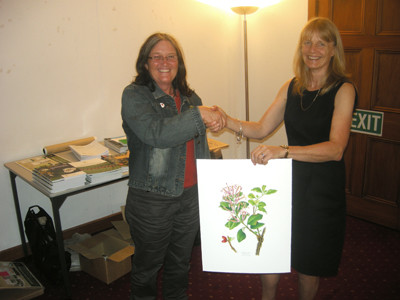 Since the mid 1990s the Greater Wellington Regional Council has been fully committed to pest animal and plant control and monitoring of indigenous plant communities. Their commitment to these goals has been recognised by the Network’s Council award for ‘Local Authority Protecting Native Plant Life’. The council has worked intensively on pest plant control since 1996 leading to improved vegetation condition. More recently, in 2010, the council helped to facilitate the successful campaign to purchase Baring Head, a 284-ha headland near the entrance to Wellington Harbour/Te Whanganui a Tara, and was one of the major contributors of towards the purchase price. The council has gazetted the land as Scenic Reserve, to protect its wide range of native coastal plant communities, landform and cultural/historical features. The property, now part of East Harbour Regional Park, has been the subject of two workshops run by the council for community groups. Photo of Robyn Smith receiving the award on behalf of the council.
Since the mid 1990s the Greater Wellington Regional Council has been fully committed to pest animal and plant control and monitoring of indigenous plant communities. Their commitment to these goals has been recognised by the Network’s Council award for ‘Local Authority Protecting Native Plant Life’. The council has worked intensively on pest plant control since 1996 leading to improved vegetation condition. More recently, in 2010, the council helped to facilitate the successful campaign to purchase Baring Head, a 284-ha headland near the entrance to Wellington Harbour/Te Whanganui a Tara, and was one of the major contributors of towards the purchase price. The council has gazetted the land as Scenic Reserve, to protect its wide range of native coastal plant communities, landform and cultural/historical features. The property, now part of East Harbour Regional Park, has been the subject of two workshops run by the council for community groups. Photo of Robyn Smith receiving the award on behalf of the council.
Young Conservationist
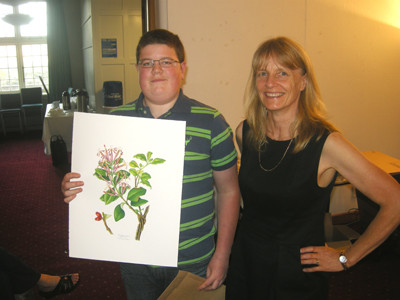 The ‘Young Plant Conservationist of the Year’ award went to Cory Meister, a 17 year old from Island Bay in Wellington. He is a regular and enthusiastic volunteer in several environmental planting and restoration groups. His involvement began when he was nine years old, doing weekend work with the Southern Environmental Association. For five years he assisted on working days for the Paekawakawa Bush Reserve in Island Bay. For the past three years Cory has worked alongside one of the Sisters in the gardens at the Home of Compassion in Island Bay. Cory has recently started work as a volunteer in the weekends at the Forest and Bird Society in Highbury.
The ‘Young Plant Conservationist of the Year’ award went to Cory Meister, a 17 year old from Island Bay in Wellington. He is a regular and enthusiastic volunteer in several environmental planting and restoration groups. His involvement began when he was nine years old, doing weekend work with the Southern Environmental Association. For five years he assisted on working days for the Paekawakawa Bush Reserve in Island Bay. For the past three years Cory has worked alongside one of the Sisters in the gardens at the Home of Compassion in Island Bay. Cory has recently started work as a volunteer in the weekends at the Forest and Bird Society in Highbury.
Lifetime achievement award
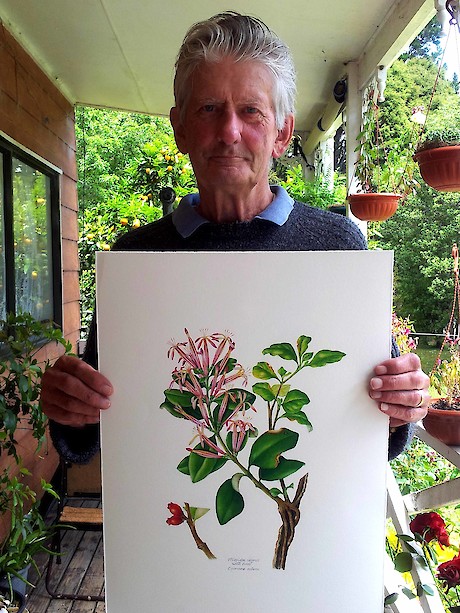 John Smith-Dodsworth has been awarded a ‘Life Time Achievement’ award by the Network for his contribution to conservation over the last 30 years. Over the past 10 years he has assisted with setting up the Plant Network website. He has provided 3600 images to the site (16% of all the images on the site). In 2007 he was made an honorary member in recognition of his help.
John Smith-Dodsworth has been awarded a ‘Life Time Achievement’ award by the Network for his contribution to conservation over the last 30 years. Over the past 10 years he has assisted with setting up the Plant Network website. He has provided 3600 images to the site (16% of all the images on the site). In 2007 he was made an honorary member in recognition of his help.
John has also assisted many botanists with images to help with identification and for publications. John’s generosity has been amazing and he has contributed to many important publications, including the 2010 Threatened Plants of NZ. John is the author of several books including the seminal NZ Ferns and Allied Plants (which he co-wrote with Pat Brownsey) and New Zealand Native Shrubs and Climbers (1991).
At various times over the last 30 years John has been heavily involved with several botanical societies including the Rotorua Botanical Society, and the Auckland Botanical Society. John has made an amazing contribution to plant conservation, mainly from behind the lens of a camera and through his generosity and willingness to help.
Special award
New Zealand broadcaster and weekend host for Radio Live, Graeme Hill has been awarded the Network’s ‘Special Award’ for his work in putting conservation into the media through the Radio Live network. He has been an amazing advocate for conservation, and has also been a long time supporter of the New Zealand Plant Conservation Network and the ideas and goals the organisation promotes. He is also currently a member of the New Zealand Plant Conservation Network and is encouraging his listeners to vote their favourite plant in the NZPCN annual ‘favourite plant election’ (voting closes December 17th). In terms of media coverage he is second to none, and is one of the strongest advocates for plants and conservation in New Zealand.
